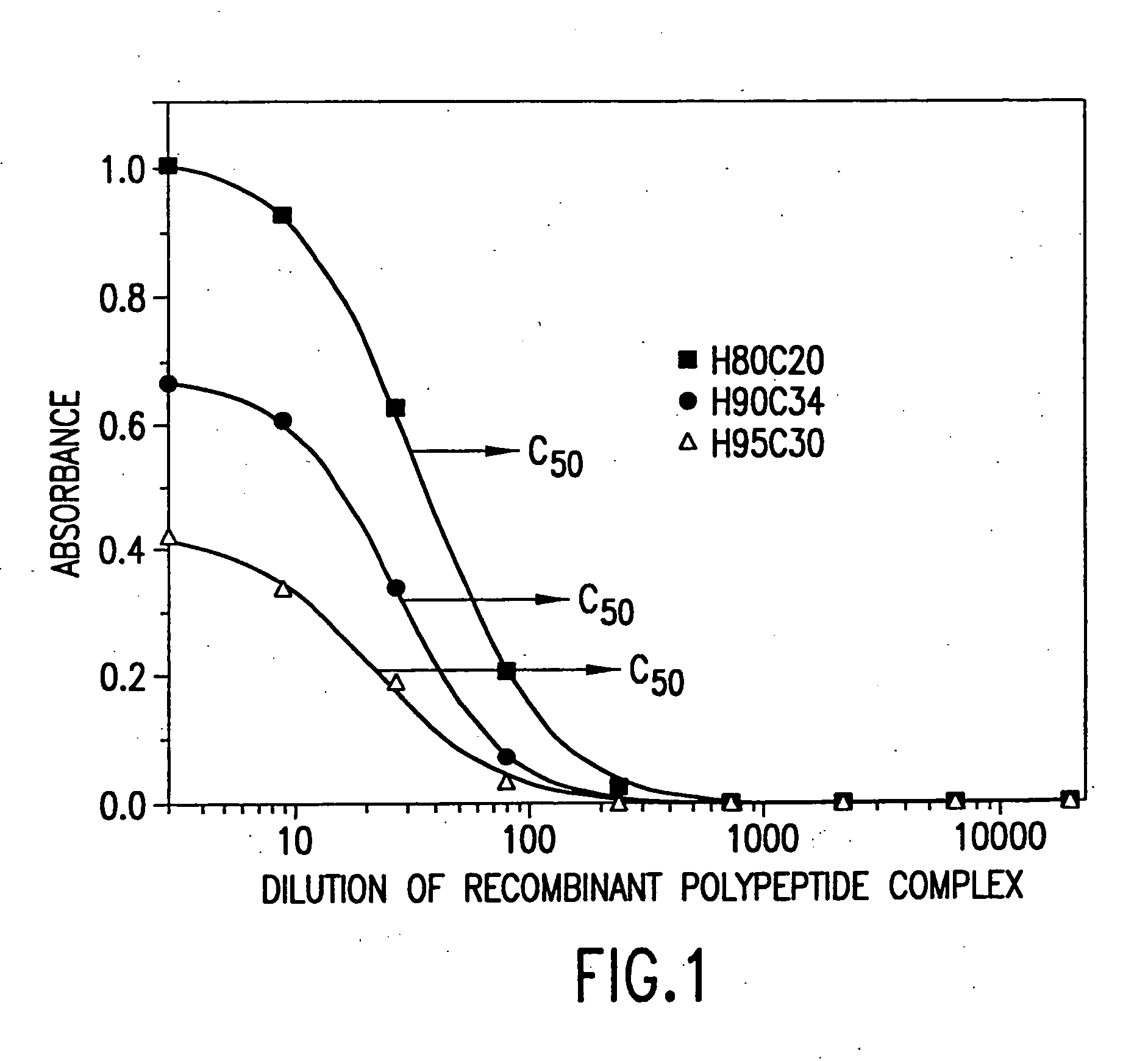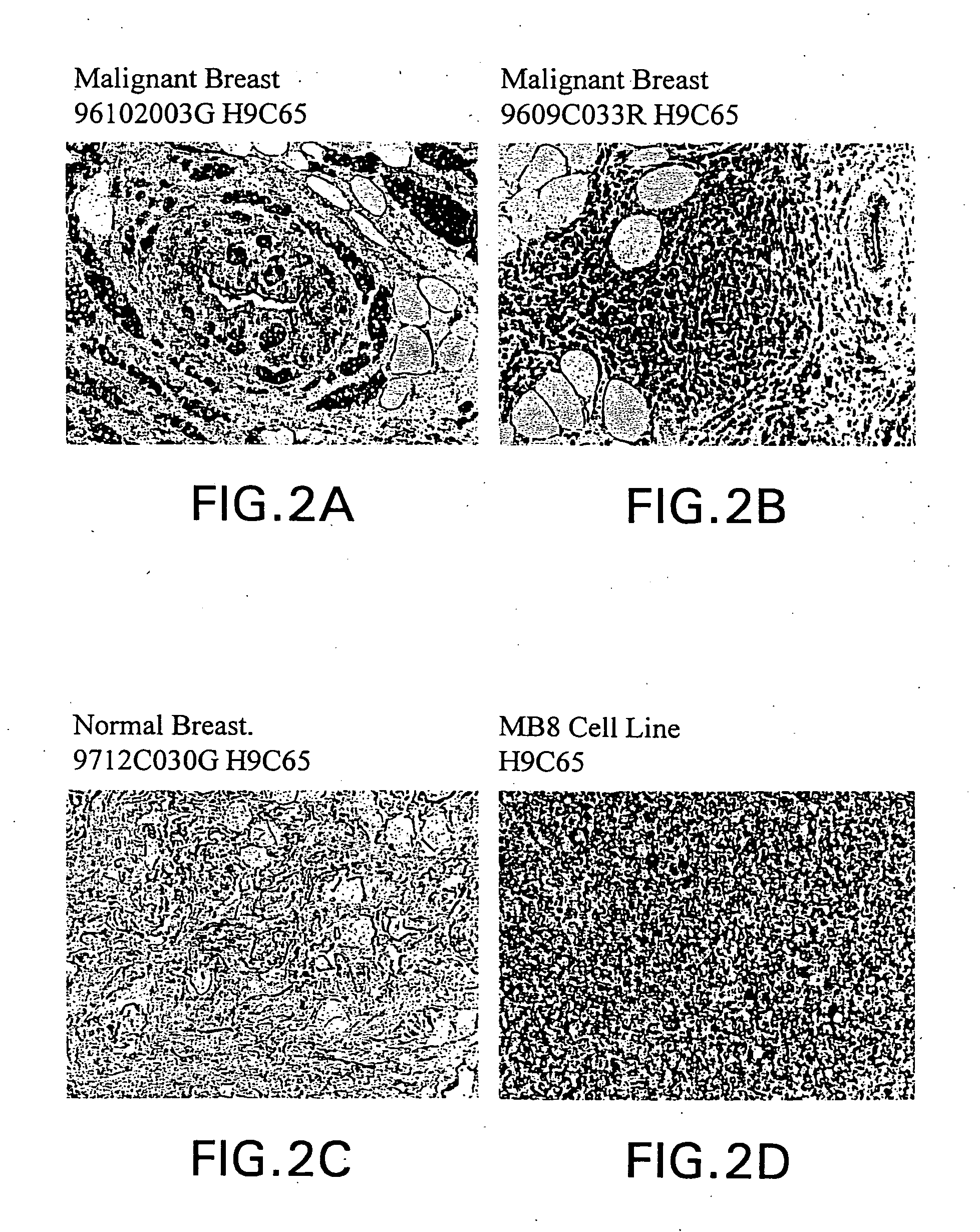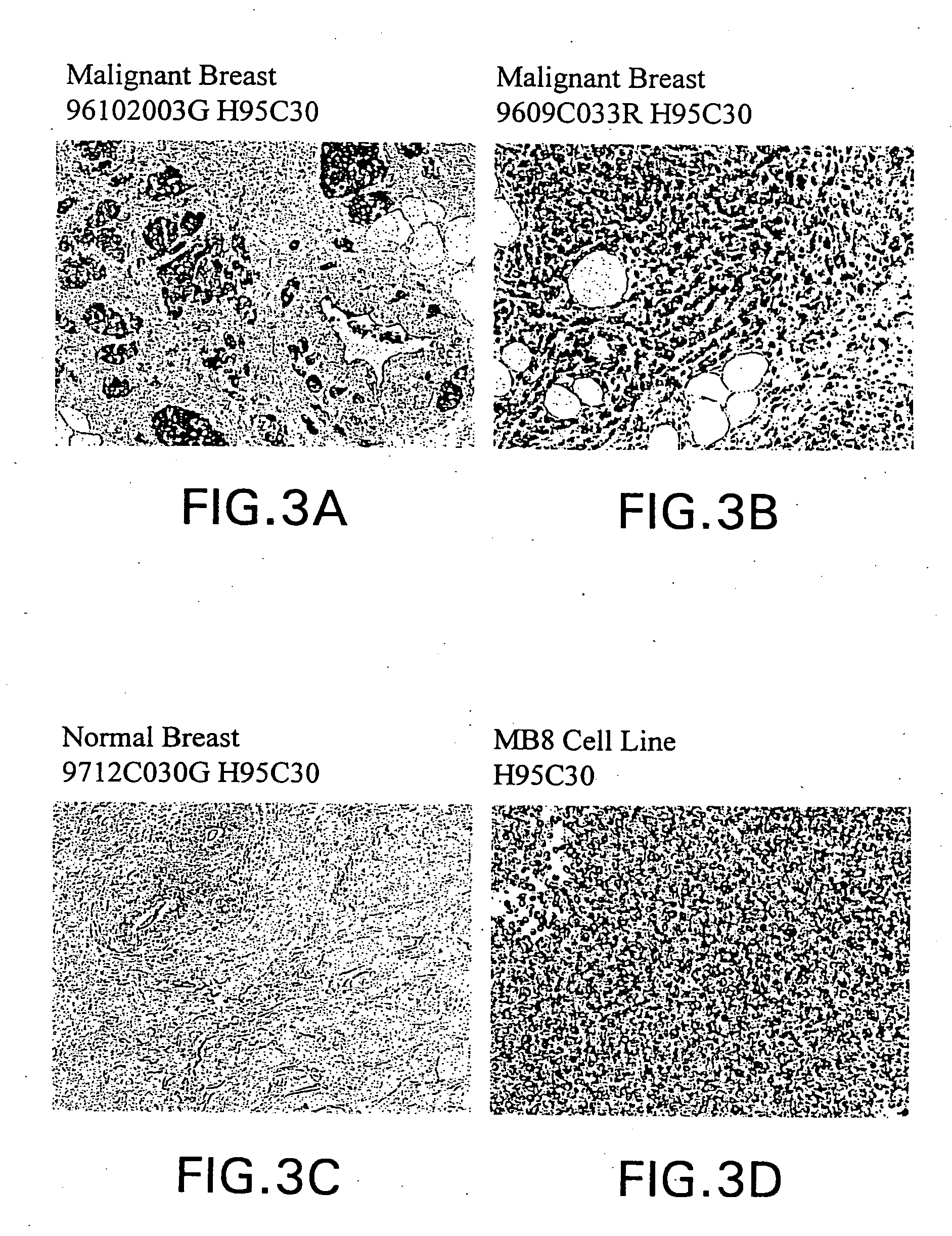Reagents and methods useful for detecting diseases of the breast
a technology for breast cancer and reagents, applied in the field of breast cancer detection, can solve the problems of false positive, patient expensive and non-beneficial treatment, and failure to predict metastasis
- Summary
- Abstract
- Description
- Claims
- Application Information
AI Technical Summary
Problems solved by technology
Method used
Image
Examples
example 1
Identification of Breast Tissue Library Mammaglobin and BU101 Gene-Specific Clones
[0208] Library Comparison of Expressed Sequence Tags (EST's) or Transcript Images.
[0209] Partial sequences of cDNA clone inserts, so-called "expressed sequence tags" (EST's), were derived from cDNA libraries made from breast tumor tissues, breast non-tumor tissues and numerous other tissues, both tumor and non-tumor and entered into a database (LIFESEQ.TM. database, available from Incyte Pharmaceuticals, Palo Alto, Calif.) as gene transcript images. See International Publication No. WO 95 / 20681. (A transcript image is a listing of the number of EST's for each of the represented genes in a given tissue library. EST's sharing regions of mutual sequence overlap are classified into clusters. A cluster is assigned a clone number from a representative 5' EST. Often, a cluster of interest can be extended by comparing its consensus sequence with sequences of other EST's which did not meet the criteria for auto...
example 2
Production of Antibodies Against the Multimeric Polypeptide Complex
[0217] A. Production of Polyclonal Antisera.
[0218] 1. Animal Immunization using Multimeric Polypeptide Complex as Immunogen. Female white New Zealand rabbits weighing 2 kg or more are used for raising polyclonal antiserum. One week prior to the first immunization, 5 to 10 ml of blood is obtained from the animal to serve as a non-immune prebleed sample.
[0219] Purified recombinant multimeric polypeptide complex (produced in accordance with example 7) is used to prepare the primary immunogen by emulsifying 0.5 ml of the protein complex at a concentration of 2 mg / ml in PBS (pH 7.2) with 0.5 ml of complete Freund's adjuvant (CFA) (Difco, Detroit, Mich.). The immunogen is injected into several sites of the animal via subcutaneous, intraperitoneal, and / or intramuscular routes of administration. Four weeks following the primary immunization, a booster immunization is administered. The immunogen used for the booster immunizat...
example 3
munoassays
[0232] A. Microtiter Plate Direct Detection EIA.
[0233] The immunoreactivity of polyclonal and / or monoclonal antiserum (against either BU101 or Mammaglobin) toward the recombinant polypeptide complex (produced in accordance with Example 7 of the present application or Example 2 of U.S. patent application Ser. No. 09 / 215,818, filed on Dec. 18, 1998 (incorporated by reference)) was determined by means of a microtiter plate EIA.
[0234] For antibody titer measurements, pooled and dialysed recombinant polypeptide complex was prepared at 2 ug / mL in 50 mM carbonate buffer, pH 9.6 and 100 .mu.l was placed in each well of an Immulon 2.RTM. High Binding microtiter plate (Dynex Technologies, Chantilly, Va.). For comparison, synthetic, full length BU101 polypeptide (SEQUENCE ID NO 6) and transiently transfected Mammaglobin M / H (as described hereinbelow in Example 7C) were prepared similarly. The plate was incubated for 14-18 hours at room temperature and then washed four times with deio...
PUM
 Login to View More
Login to View More Abstract
Description
Claims
Application Information
 Login to View More
Login to View More - R&D
- Intellectual Property
- Life Sciences
- Materials
- Tech Scout
- Unparalleled Data Quality
- Higher Quality Content
- 60% Fewer Hallucinations
Browse by: Latest US Patents, China's latest patents, Technical Efficacy Thesaurus, Application Domain, Technology Topic, Popular Technical Reports.
© 2025 PatSnap. All rights reserved.Legal|Privacy policy|Modern Slavery Act Transparency Statement|Sitemap|About US| Contact US: help@patsnap.com



